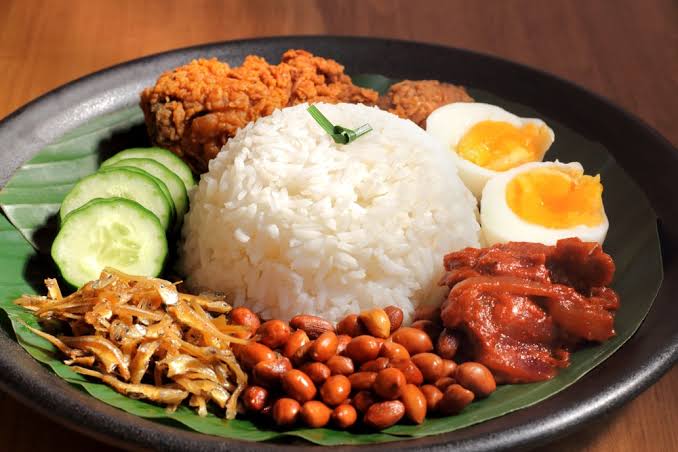Hello ladies and gents this is the Viking telling you that today we are talking about
Malagasy cuisine
Malagasy cuisine encompasses the many diverse culinary traditions of the Indian Ocean island of Madagascar. Foods eaten in Madagascar reflect the influence of Southeast Asian, African, Indian, Chinese and European migrants that have settled on the island since it was first populated by seafarers from Borneo between 100 CE and 500 CE. Rice, the cornerstone of the Malagasy diet, was cultivated alongside tubers and other Southeast Asian staples by these earliest settlers. Their diet was supplemented by foraging and hunting wild game, which contributed to the extinction of the island's bird and mammal megafauna. These food sources were later complemented by beef in the form of zebu introduced into Madagascar by East African migrants arriving around 1,000 CE.
Trade with Arab and Indian merchants and European transatlantic traders further enriched the island's culinary traditions by introducing a wealth of new fruits, vegetables, and seasonings.
Throughout almost the entire island, the contemporary cuisine of Madagascar typically consists of a base of rice served with an accompaniment; in the official dialect of the Malagasy language, the rice is termed vary ([ˈvarʲ]), and the accompaniment, laoka ([ˈlokə̥]). The many varieties of laoka may be vegetarian or include animal proteins, and typically feature a sauce flavored with such ingredients as ginger, onion, garlic, tomato, vanilla, salt, curry powder, or, less commonly, other spices or herbs. In parts of the arid south and west, pastoral families may replace rice with maize, cassava, or curds made from fermented zebu milk.
A wide variety of sweet and savory fritters as well as other street foods are available across the island, as are diverse tropical and temperate-climate fruits. Locally produced beverages include fruit juices, coffee, herbal teas and teas, and alcoholic drinks such as rum, wine, and beer.
The range of dishes eaten in Madagascar in the 21st century reflects the island's history and demographic diversity. The complexity of Malagasy meals can range from the simple, traditional preparations introduced by the earliest settlers, to the refined festival dishes prepared for the island's 19th-century monarchs.
Although the classic Malagasy meal of rice and its accompaniment remains predominant, over the past 100 years other food types and combinations have been popularized by French colonists and immigrants from China and India. Consequently, Malagasy cuisine is traditional while also assimilating newly emergent cultural influences.
and as always have a chilled day from the Viking

Comments
Post a Comment